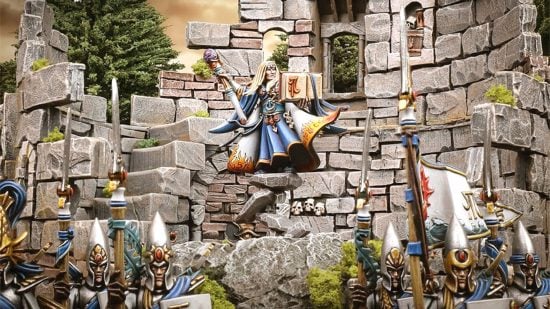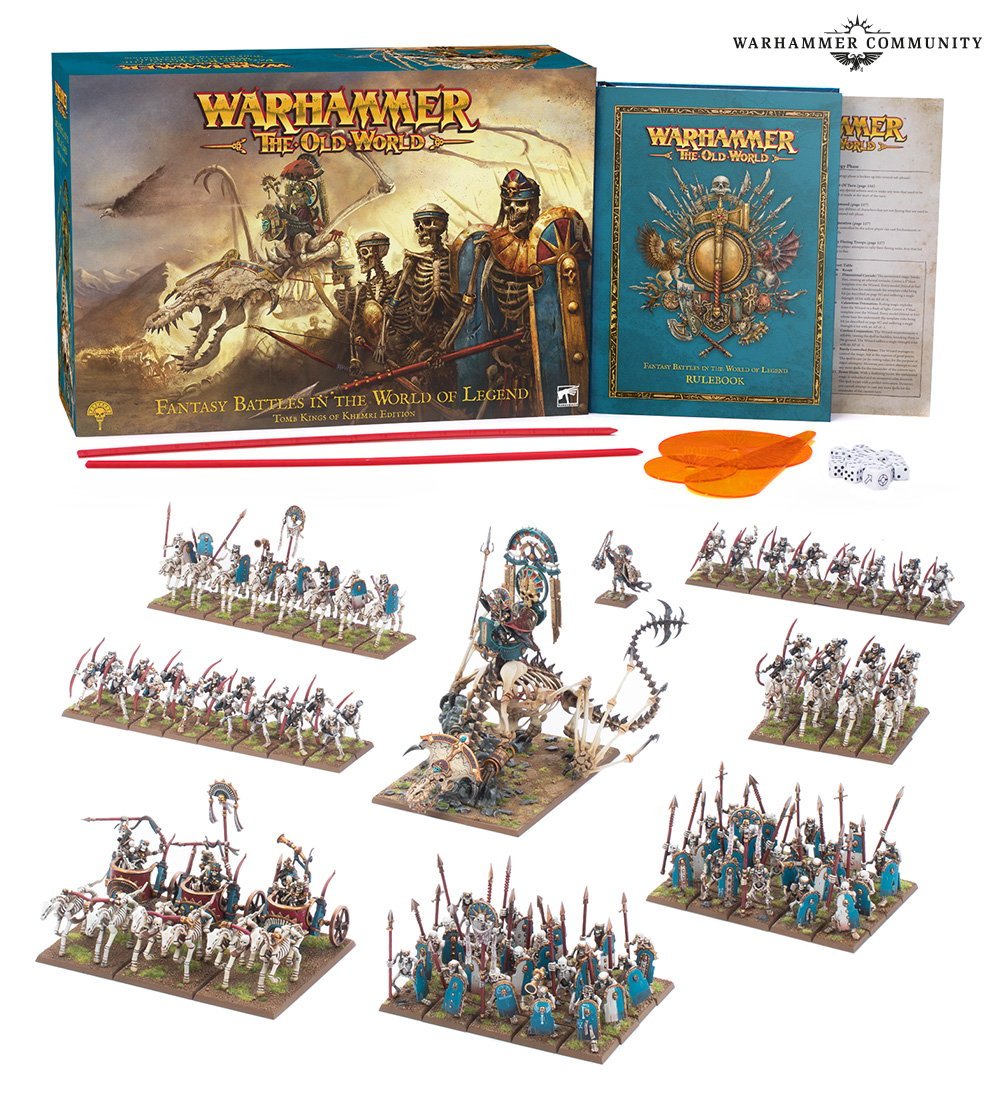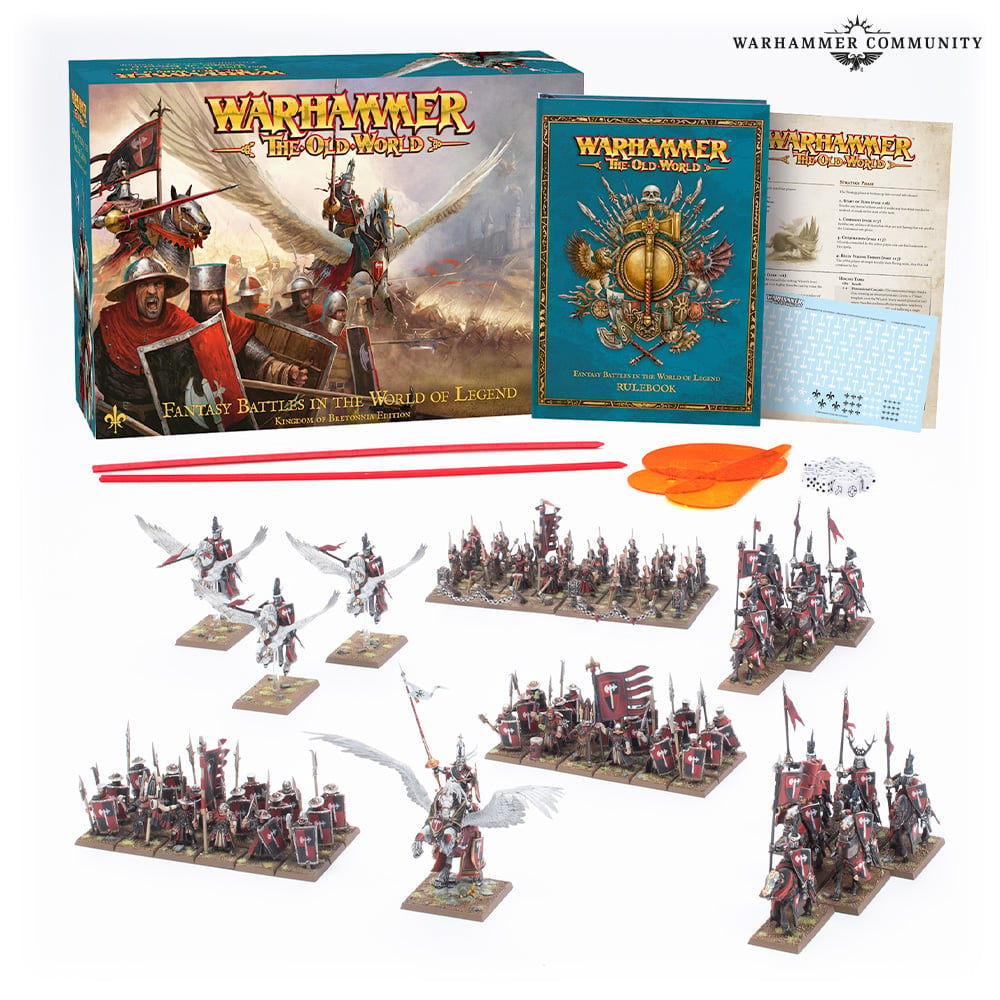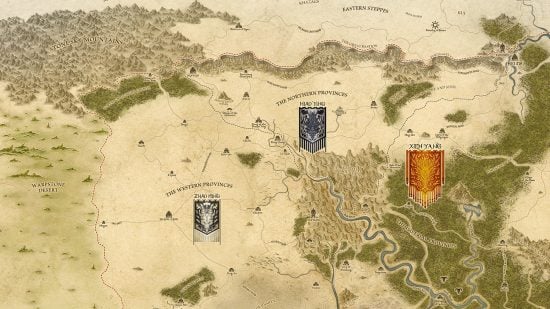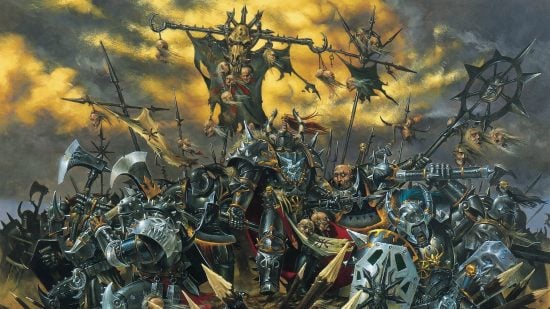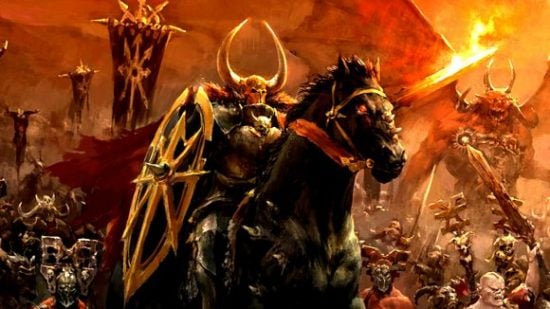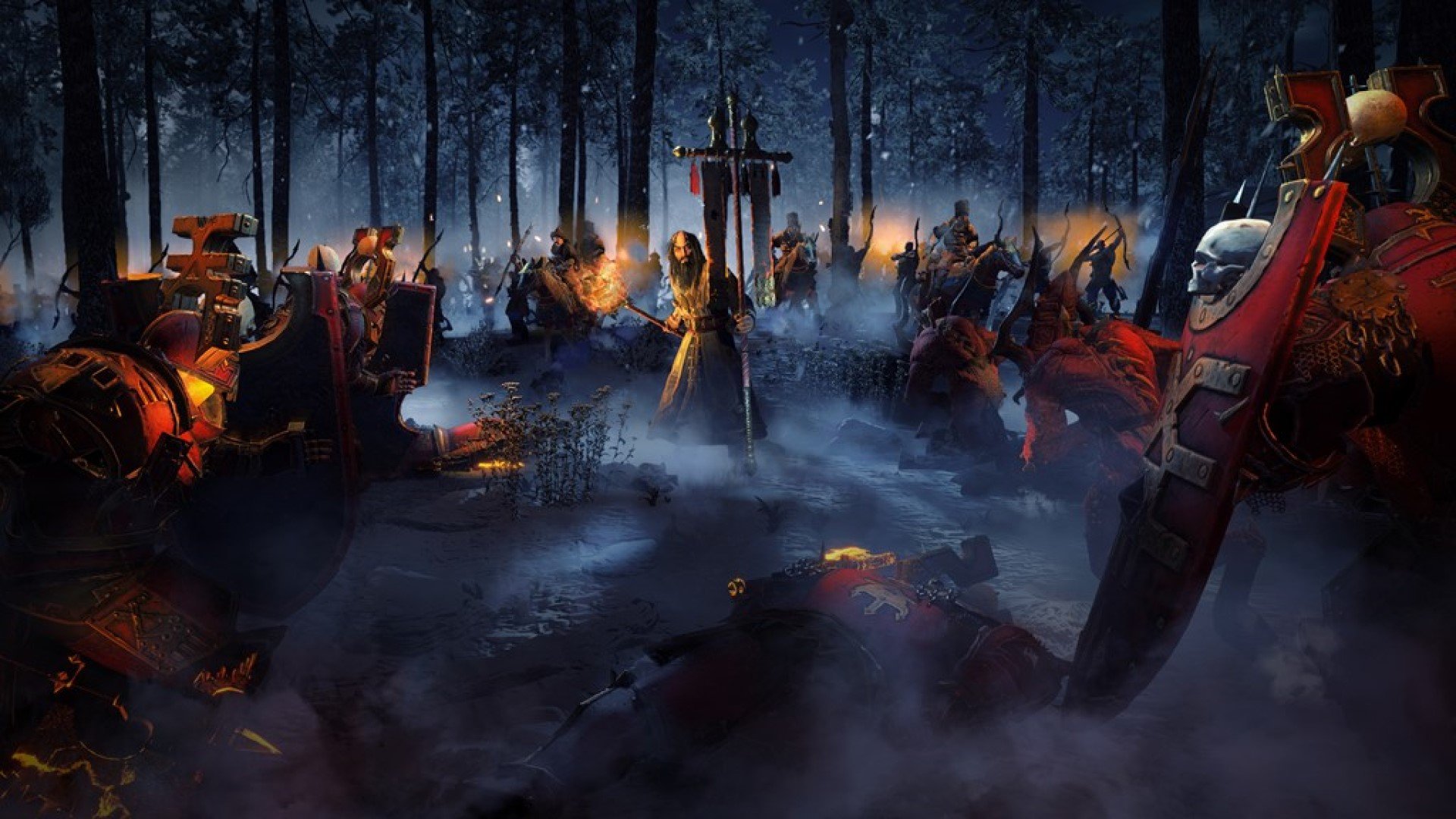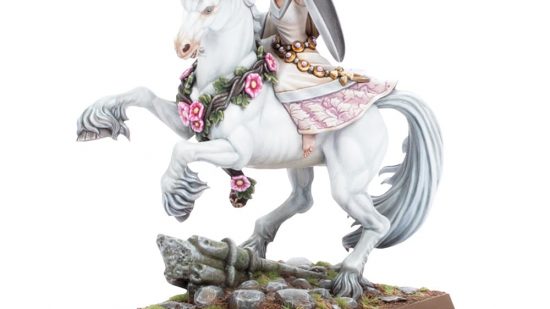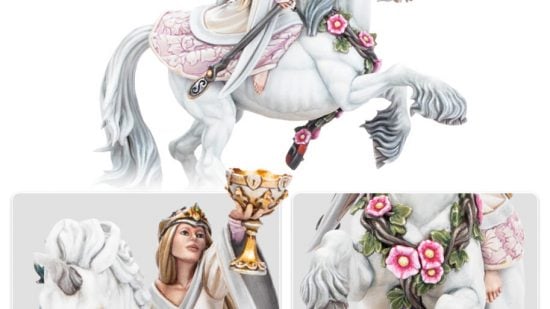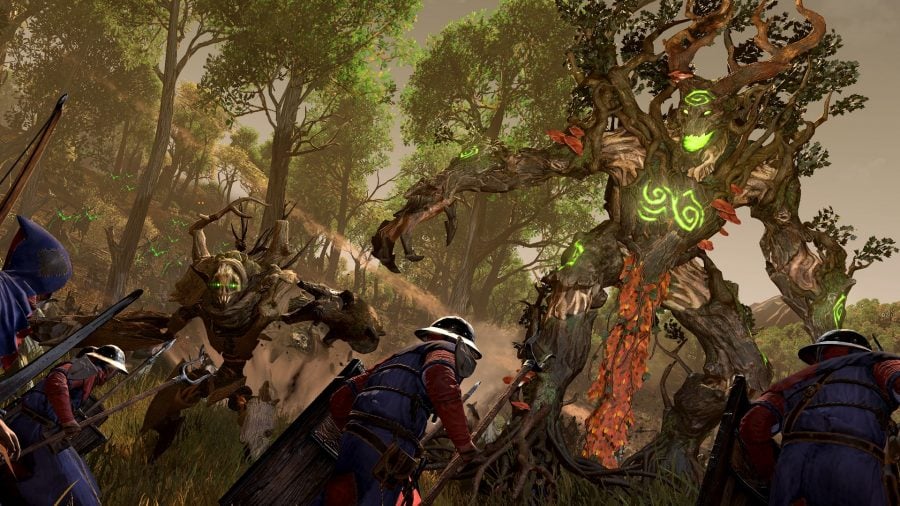Warhammer: The Old World is a reincarnation of the classic Warhammer Fantasy Battle (WFB) miniature wargame, released in January 2024 by Games Workshop. It pits fantasy armies including men, elves, Orcs, and dwarfs against one another in massed battles on the tabletop. With The Old World now in full swing, this guide explains everything you need to know about this complex, compelling wargame.
As of January 2024, The Old World is finally upon us, and classic armies of square-based fantasy Bretonnians, bony sandy Tomb Kings, and more are ranking and flanking across our tabletops once again!
We’ve been tracking The Old World since it was announced – so if you already know the basics, check out some of our other in-depth guides on the game:
- Warhammer: The Old World factions
- Warhammer The Old World rules
- Warhammer: The Old World combat phase
If you’re after the other flavor of Warhammer universe, we have many guides to the Warhammer 40k factions. Or if you’re fully sworn off GW games, we’ve got a handy guide to the best miniature wargames to look for more inspiration.
If you’re new to the game, though, this guide has everything you need to know about Warhammer: The Old World:
- What is Warhammer: The Old World?
- Warhammer: The Old World starter set
- Warhammer: The Old World map and setting
- Warhammer: The Old World timeline
- Warhammer: The Old World and the End Times
- Warhammer: The Old World release date
- Warhammer: The Old World base sizes
- Warhammer: The Old World miniature scale
If you’ve arrived at this article but you actually want to know about Games Workshop’s exhibition space and theme bar in Nottingham, you should check out our guide to Warhammer World. Easy mistake to make!
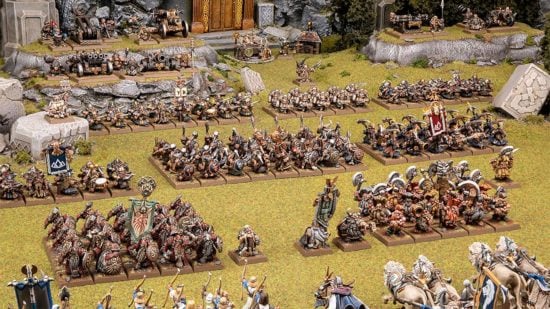
What is Warhammer: The Old World?
It might be a long, potentially confusing title, but Warhammer: The Old World is a simple proposition: Games Workshop has simply taken Warhammer Fantasy Battle – its original, well loved tabletop fantasy wargame – out of retirement, given its ruleset and aesthetics a tune-up and a brand new coat of paint, and brought it back to life for hardcore fans and new bloods alike.
Warhammer Fantasy Battle was Games Workshop’s first breakout hit miniature wargame, released way back in 1983, and set in the high fantasy ‘Old World’ – a warped but recognizable analog of the real world map, centered on Europe, populated with a range of classical fantasy races locked in a state of perpetual warfare.
Games Workshop figuratively destroyed the Old World in November 2015, and ceased producing many WFB miniatures, making way for a simpler, skirmish game called Age of Sigmar, its new Mortal Realms setting, and a whole range of brand new Age of Sigmar armies.
New fans are therefore most likely to know the Old World from Warhammer fantasy games on PC like Total War Warhammer 3 or Vermintide 2. But in November 2019 Games Workshop announced it would return to its roots with a new game, Warhammer: The Old World.
What kind of game is Warhammer: The Old World?
The Old World is a somewhat rules-heavy tabletop wargame in the ‘rank and flank’ tradition. That means that your army’s units – made up of individual square-based miniatures rather than the now familiar round ones – mostly operate in tightly organised blocks of serried ranks, with strict rules that govern each block’s position, facing, and movements.
Successful strategy therefore relies, far more heavily than in other Warhammer games, on carefully managing your formations, protecting your vulnerable flanks and rear, and exploiting your opponents’. In that respect it has much in common with real-time PC battles in Total Warhammer 3 – but tabletop wargaming newbies coming to WH:TOW from TW3 should be prepared for a learning curve.
Compared to the current incarnations of GW’s two main games, 40k and Age of Sigmar, it’s also a more granular, ‘crunchy’ – or simulation heavy – game, with a larger number of situational modifiers and special rules applying to most actions and interactions during a battle.
Generally, in games of The Old World, having your archers fire off a ranged volley at an enemy unit, or pulling your beleaguered warriors out of a losing fight, will involve more dice-rolling, calculation, and comparison to determine the result, compared to similar actions and situations in 40k or AoS.
This is how Warhammer Fantasy Battle 8th Edition functioned before its demise in 2015, and will be a joy for the contingent of that game’s biggest fans, who’ve been mourning its passing for nearly a decade.
Should I play Warhammer: The Old World?
For some gamers – especially experienced ‘old school’ tabletop wargamers – this deeper level of mechanical sophistication is like the nectar of the gods, adding extra strategic options and injecting more delicious, zoomed-in detail to your tabletop storytelling.
For others, it’ll simply pile more dead weight of interminable dice-rolling and looking up of special rules to an experience that already requires significantly more time, mental effort, and rules learning than simply playing the best board games, or whipping out a couple of MTG decks for a quick match.
As with all such things, you’ll have to decide for yourself whether Warhammer: The Old World is right for you – and, if any of the above appeals to you, you should absolutely give it a try.
Our only plea is: if you give it your best shot and find the rules overwhelming, don’t write off Warhammer altogether – 40k and AoS are right there, and they’re both brilliant in their own ways, as well as being far lighter mechanically.
Warhammer: The Old World starter set
There are two Warhammer: The Old World starter sets – the Tomb Kings of Khemri edition and the Kingdom of Bretonnia edition. Each comes with the core rules, a complete army of classic plastic miniatures, and a new centrepiece miniature to lead the force.
Games Workshop caused some confusion when it announced at Warhammer Fest 2023 that Warhammer: The Old World wouldn’t have a starter set.
Games Workshop uses the term ‘starter set’ in a very particular way – it refers to products intended for someone who has never played a wargame or serious strategy game before. An important feature is a supplementary “how to play” manual that introduces the newcomer to the hobby in a much more gentle way than a regular rulebook.
For an example of this, notice how the Warhammer 40k 10th edition launch box Leviathan was not marketed as a Warhammer 40k starter set, even though it contained the core rulebook and enough models to start two armies.
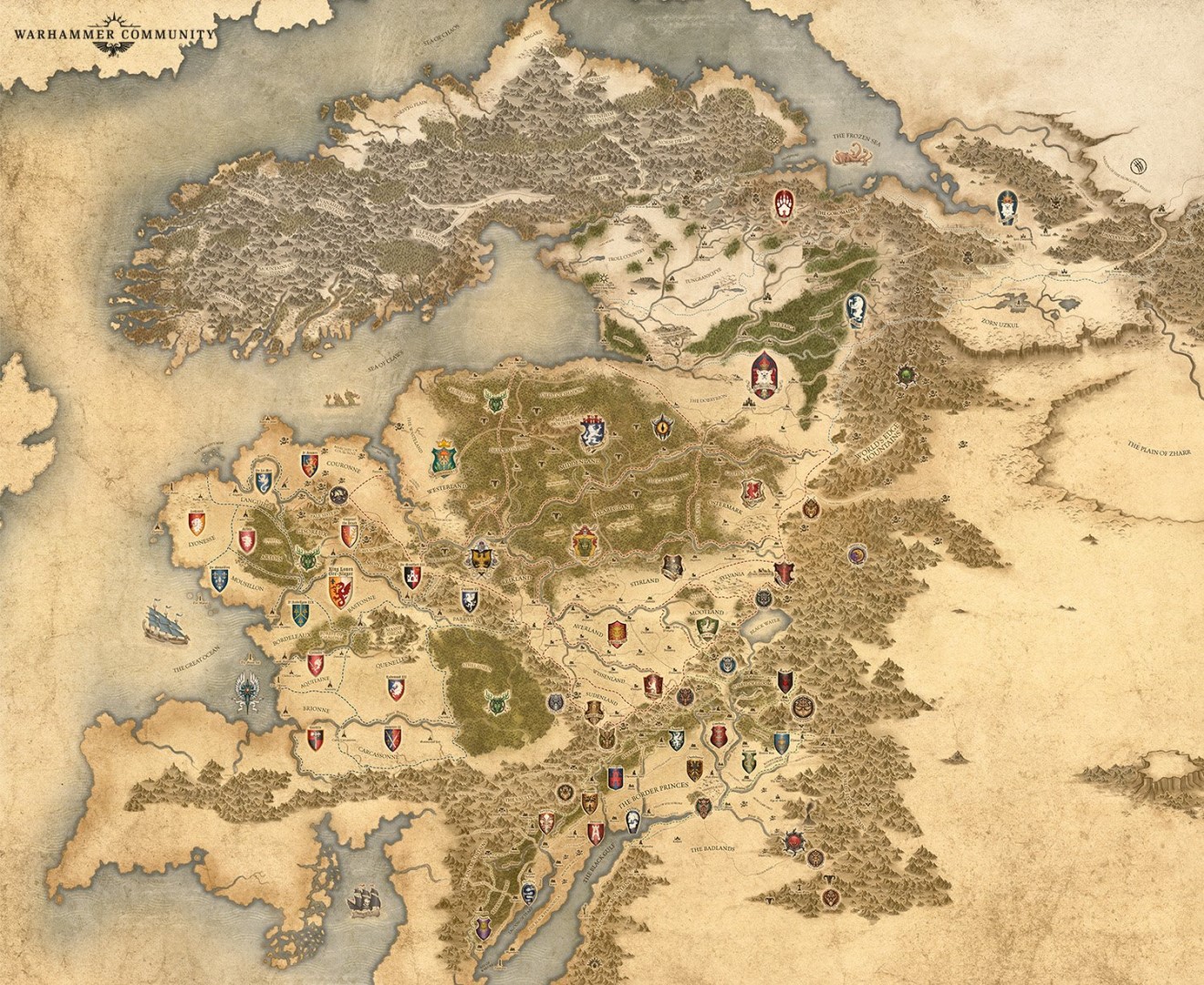
Warhammer: The Old World map and setting
GW has revealed several versions of the Warhammer: The Old World map, starting with a map of – unsurprisingly – the Old World itself. If the Warhammer world is a slightly distorted fantasy version of Earth, the Old World is the part roughly analogous to Europe.
The Empire (the fantasy Holy Roman Empire) and Bretonnia (fantasy medieval France) featured on this first version of the map. They’ve always been core parts of the setting. Kislev (fantasy Russia), Tilea (fantasy Italy), and Estalia (fantasy Spain) were all sketched out in similar detail – these regions have had cursory coverage in previous editions of WFB, if any.
The map of the Warhammer World was actually one of the first pieces of work that (now independent) artist Louise Sugden did after joining Games Workshop, as she revealed in her interview with Wargamer. She joined the Specialist Design Studio in 2016, so if she really did get cracking on the map right away, The Old World may have been in development much earlier than we might have thought.
The most surprising part of this map is that it contains Grand Cathay. Cathay has long been part of the Warhammer World and was a starter faction in Total War: Warhammer 3, but it has never been mapped in detail before – despite the fact it’s not a playable faction in The Old World yet.
The map shows its cities and roads, its Great Bastion fortress wall, and its terrain — from the Warpstone Desert in the West to the Forests of the Moon in the East. Games Workshop’s article assures us that the map is not only valid for Total War: Warhammer 3 but also for the period explored in Warhammer: The Old World.
Warhammer: The Old World timeline
The Warhammer The Old World timeline starts in 2276, set in the decades prior to the Chaos invasion led by Asavar Kul in 2301 IC.
This cataclysmic invasion came at the end of centuries of civil strife within the Empire, with the Emperor’s throne long vacant, and the four provinces of Westerland, Osterland, Talabec, and Reikland vying for control.
That’s about a century later than we initially expected. GW had previously confirmed that Louen Orc-Slayer (not Louen Leoncouer) is the King of Bretonnia in Warhammer: The Old World. The last published army book for Bretonnia stated that he declared an Errantry War against the Orcs in 2201IC, a century before Kul’s invasion, making him a very old man by that point – though incredibly long life is not impossible for one who has drunk from the Bretonnian Grail.
Warhammer: The Old World and the End Times
The End Times narrative brought an end to Warhammer Fantasy Battles in 2015, and the Warhammer Old world in 2528 IC – the new game is set hundreds of years prior.
While elves and (possibly) a few dwarves live long enough to cross over between the two settings, daemons are eternal, and undead are… well, undead, for the most part this allows the new game to have a cast and plot totally disconnected from the End Times.
The small number of miniatures that were added to the game in the last days of Warhammer Fantasy Battle, such as the Putrid Blightkings and Khorne Wrathmongers, don’t have rules in The Old World.
Warhammer: The Old World release date
The Warhammer: The Old World release date was Saturday, January 20, 2024. The launch line up included new and re-released models for the Bretonnia and Tomb Kings, a new rulebook, and army books for the forces of good and evil.
The game was announced on November 15, 2019, and in its first article, GW was at pains to make clear that “this is a long way off. Years. More than two. Like three or more. Definitely not soon”.
In a Warhammer Community update article on The Old World on July 21 2021, GW reiterated – with deliberate coyness – that it would still be “quite some time yet” before the game arrived, and that further updates would arrive on the Warhammer Community site “at some point”.
Those updates started to ramp up in Fall 2023 – after the exciting launch of Warhammer 40k 10th edition had died down – with a slew of reveals about the new old wargame’s design, gameplay, rules, factions, and new miniatures we could expect.

Among the more surprising unveilings – given limited expectations for how many brand new plastic sculpts would arrive as part of the Old World launch – was the magnificent new plastic Tomb Kings Necrolith Bone Dragon, first shown off in November 2023 in the video above.
Finally, in late January 2024, the two Warhammer The Old World launch boxes – Bretonnia and Tomb Kings editions – went to pre-order, alongside a bevy of ancillary bits and bobs for those keen enough to buy them, including the old modular movement trays, brand new (huge) army rules cards, and (shock, horror) beautiful custom card sleeves too.
Warhammer The Old World base size
The first teaser for the game hinted it would use square bases, and in a July 2021 article, GW affirmed that “Regiments move in ranked-up units, and strategic manoeuvring into position to launch or receive a critical charge will be as much a key part of the game as it ever was”.
Age of Sigmar eschewed WFB’s deliciously complicated rules for facings, reforming, wheeling, in favor of ‘skirmishes’ between loosely corralled models on 40k-style circular bases – The Old World brings them back
If you were planning to blow the dust off your old WFB army and plonk it straight into Warhammer: The Old World, you’ll need to do a little more work first. A development diary from April 14 2023 explains that, in order to better accommodate the larger minis that characterised WFB towards the end of its lifespan, models will have larger bases.
The details Games Workshop has provided so far are vague, but new base sizes will be part of the unit profile.
| Warhammer base size | The Old World base size |
| 20mm | 25mm |
| 25mm | “New size” |
| 25 x 50mm (cavalry) | “New size” |
All 20mm bases will be replaced with 25mm bases, and most 25mm and 25x50mm (cavalry) bases will be replaced with a new base size. The new base sizes for your troops will be part of their unit profile.
Warhammer: The Old World miniature scale
GW confirmed in its July 2021 article that the Warhammer: The Old World miniatures scale will be the same as the original Warhammer Fantasy Battle, 28mm – putting paid to scurrilous rumours it might go either bigger or smaller.
“We want people to be able to use their old armies if they wish, or to start new ones, or to add new miniatures to old armies – whatever they want”, the article explains.
Speculation had for some time been rife that The Old World would strike out alone with a totally different model scale. Spikey Bits cited “an industry insider” who says they may go smaller (15mm or 8mm), to create battles with a more ‘epic’ feel, which would have been cool but was definitely wrong.

There were some interesting arguments for this, to do with the precedent set by Warmaster (a short-lived ‘epic’ scale version of WFB), appealing to the Total War crowd, or attempting to make things difficult for companies making “counts-as” miniatures.
If you are interested in a small scale miniature wargame, check out our Warhammer Legions Imperialis review. If you don’t vibe with The Old World, but still want a fantasy wargame with ranks and flanks, Kings of War has a place on our list of the best miniature wargames, and we have a guide to other rank and flank fantasy wargames.
